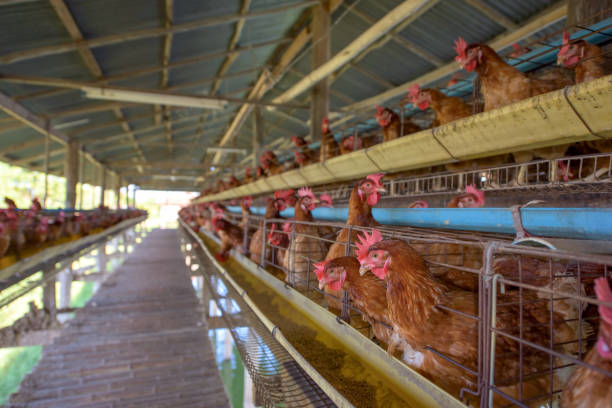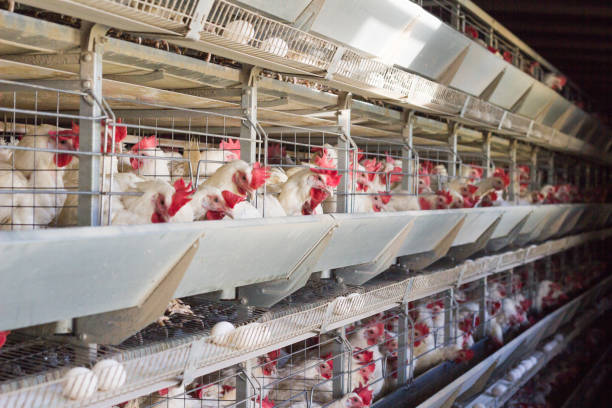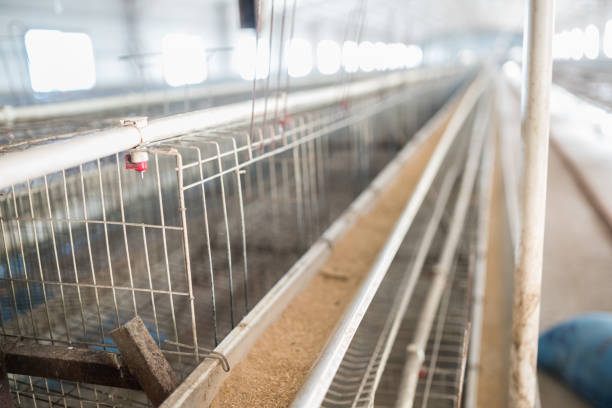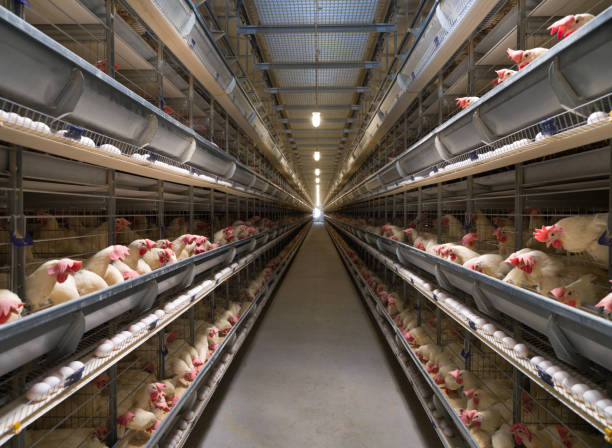
How to Start a Profitable Chicken Farm in Africa: Key Steps & Best Practices
How to Start a Profitable Chicken Farm in Africa: Key Steps & Best Practices
Africa’s agricultural sector is booming, and poultry farming presents a particularly promising avenue for aspiring entrepreneurs. With a growing population and increasing demand for protein-rich foods like chicken and eggs, starting a chicken farm can be a lucrative venture. However, success requires careful planning, efficient management, and a thorough understanding of the local market dynamics. This comprehensive guide outlines the key steps and best practices for establishing and running a profitable chicken farm in Africa.
I. Market Research and Planning: Laying the Foundation for Success
Before diving into the nitty-gritty of chicken farming, thorough market research and meticulous planning are crucial. This initial phase will help you understand the market demand, identify potential challenges, and develop a solid business plan.
Assess Market Demand: Identify your target market. Are you focusing on broiler chickens for meat production, layer chickens for egg production, or both? Research the local demand for chicken and eggs in your area. Understanding consumer preferences, prevailing market prices, and existing competition is essential. You can conduct surveys, visit local markets, and consult with local retailers and restaurants to gather valuable insights.
Analyze the Competition: Identify existing chicken farms in your area and analyze their strengths and weaknesses. What types of chickens do they raise? What are their production methods? What are their pricing strategies? Understanding your competition will help you differentiate your farm and identify opportunities for improvement.
Develop a Business Plan: A comprehensive business plan is the roadmap for your chicken farm. It should outline your goals, strategies, and projections. Key components of a business plan include:
Executive Summary: A brief overview of your business, including your mission, vision, and objectives.
Company Description: Detailed information about your farm, including its location, size, and legal structure.
Market Analysis: A thorough analysis of the target market, including demand, competition, and market trends.
Products and Services: A description of the products and services you will offer, such as broiler chickens, eggs, or processed chicken products.
Marketing and Sales Strategy: A plan for how you will promote and sell your products.
Management Team: Information about the key personnel and their respective roles.

Financial Projections: Realistic financial projections, including startup costs, operating expenses, revenue forecasts, and profitability analysis. Secure funding through loans or investors (more on that below).
Secure Funding: Starting a chicken farm requires capital investment. Explore various funding options, such as:
Personal Savings: Invest your own savings to minimize reliance on external funding.
Loans: Apply for loans from banks, microfinance institutions, or agricultural lending programs.
Investors: Seek investment from angel investors or venture capitalists who are interested in the agricultural sector.
Grants: Research and apply for government grants or international development grants that support agricultural development.
II. Choosing the Right Chicken Breed and Housing System
Selecting the appropriate chicken breed and housing system is critical for optimizing production and profitability.
Select the Right Breed: The choice of breed depends on your production goals.
Broiler Chickens: Breeds like Cobb 500, Ross 308, and Arbor Acres are known for their rapid growth rate and high meat yield. They are ideal for meat production.
Layer Chickens: Breeds like Lohmann Brown, Hy-Line Brown, and ISA Brown are known for their high egg production rate. They are ideal for egg production.
Dual-Purpose Breeds: Breeds like Rhode Island Red and Plymouth Rock can be raised for both meat and egg production, though they may not be as efficient as specialized breeds.
Choose a Suitable Housing System: The housing system can significantly impact chicken health, productivity, and overall farm efficiency.
Deep Litter System: Chickens are raised on a floor covered with litter material like wood shavings, rice husks, or straw. This system is relatively inexpensive to set up but requires regular cleaning and management to prevent disease outbreaks.
Slat Floor System: Chickens are raised on a floor made of wooden or plastic slats. This system allows for better ventilation and manure management compared to the deep litter system.
Cage System: Chickens are housed in individual or group cages. This system offers excellent hygiene control, facilitates easy egg collection, and maximizes space utilization. While controversial due to animal welfare concerns, it’s still a prevalent method. Consider animal welfare standards in your target market.
Free-Range System: Chickens are allowed to roam freely in an outdoor area. This system is generally considered more humane but requires a larger land area and may result in lower egg production and greater vulnerability to predators and diseases.
Housing Considerations: Regardless of the chosen system, the chicken house should provide:
Protection from the Elements: Shelter from rain, sun, wind, and extreme temperatures.
Adequate Ventilation: Proper ventilation to remove ammonia and moisture, and maintain optimal air quality.
Sufficient Space: Adequate space to prevent overcrowding and promote healthy growth. Follow recommended stocking densities for your chosen breed and housing system.
Easy Access to Feed and Water: Ensure that chickens have easy access to clean feed and water at all times.
Biosecurity Measures: Implement biosecurity measures to prevent the introduction and spread of diseases (more on this later).
III. Sourcing Quality Chicks and Implementing Biosecurity Protocols
The health and quality of your chicks are paramount for a successful chicken farm. Furthermore, a robust biosecurity plan is essential to protect your flock from diseases.
Source Quality Chicks: Purchase chicks from reputable hatcheries that provide healthy, vaccinated chicks. Inquire about the hatchery’s disease control and quality assurance programs. Look for chicks that are active, alert, and free from any signs of illness.
Implement a Strict Biosecurity Plan: Biosecurity is a set of practices designed to prevent the introduction and spread of diseases on your farm. Key biosecurity measures include:
Restricted Access: Limit access to your farm to essential personnel only. Implement a visitor log and require visitors to wear protective clothing and footwear.

Disinfection: Regularly disinfect your chicken house, equipment, and vehicles. Use effective disinfectants and follow recommended application rates.
Foot Baths: Place foot baths containing disinfectant solution at the entrance of your chicken house.
Rodent and Pest Control: Implement a comprehensive rodent and pest control program to prevent the spread of diseases by rodents and insects.
Vaccination: Follow a vaccination schedule recommended by your veterinarian to protect your chickens from common poultry diseases.
Quarantine: Quarantine new chicks or sick birds in a separate area to prevent the spread of diseases to the rest of the flock.
Proper Waste Disposal: Dispose of dead birds and manure properly to prevent the spread of diseases.
IV. Feeding and Watering: Ensuring Optimal Growth and Production
Proper nutrition is crucial for optimal growth, egg production, and overall health of your chickens.
Provide a Balanced Diet: Feed your chickens a balanced diet that meets their nutritional requirements.
Broiler Chickens: Feed broiler chickens a starter diet from day one to three weeks, followed by a grower diet until slaughter weight.
Layer Chickens: Feed layer chickens a starter diet from day one to six weeks, followed by a grower diet until 18 weeks, and then a layer diet when they start laying eggs.
Consider Locally Sourced Feed Ingredients: Explore locally sourced feed ingredients to reduce feed costs. However, ensure that the ingredients are of high quality and meet the nutritional requirements of your chickens.
Ensure Access to Clean Water: Provide your chickens with access to clean, fresh water at all times. Use automatic drinkers or water troughs that are easy to clean and maintain. Regularly clean and disinfect your water system to prevent the growth of bacteria and algae.
Monitor Feed Consumption and Growth: Monitor feed consumption and growth rates to ensure that your chickens are receiving adequate nutrition. Adjust the feed formulation or feeding schedule as needed.
V. Health Management and Disease Prevention
Maintaining the health of your flock is essential for maximizing productivity and profitability.
Regular Health Checks: Regularly inspect your chickens for any signs of illness, such as lethargy, ruffled feathers, decreased appetite, or abnormal droppings.
Prompt Treatment: Seek veterinary assistance immediately if you suspect a disease outbreak. Prompt treatment can help prevent the spread of the disease and minimize losses.

Vaccination Programs: Implement a vaccination program to protect your chickens from common poultry diseases. Consult with your veterinarian to develop a vaccination schedule that is appropriate for your region.
Parasite Control: Implement a parasite control program to prevent and treat internal and external parasites. Regularly deworm your chickens and treat them for mites and lice.
Maintain a Clean Environment: A clean and sanitary environment is crucial for preventing disease outbreaks. Regularly clean and disinfect your chicken house, equipment, and surrounding areas.
VI. Marketing and Sales: Reaching Your Target Market
Effective marketing and sales strategies are essential for maximizing your profits.
Identify Your Target Market: Clearly define your target market. Are you selling to local markets, restaurants, supermarkets, or processors?
Develop a Marketing Strategy: Develop a marketing strategy that outlines how you will reach your target market.
Direct Sales: Sell your chickens and eggs directly to consumers at local markets or farm stands.
Wholesale: Sell your products to restaurants, supermarkets, and processors.
Online Marketing: Utilize online marketing platforms, such as social media and websites, to promote your farm and products.
Build Relationships: Build strong relationships with your customers by providing high-quality products and excellent customer service.
Pricing Strategy: Develop a pricing strategy that is competitive and profitable. Consider factors such as production costs, market prices, and competition.
Branding: Create a strong brand identity that differentiates your farm from the competition. This includes your farm name, logo, and packaging.
VII. Record Keeping and Analysis
Maintaining accurate records is essential for tracking performance, identifying problems, and making informed decisions.
Keep Detailed Records: Keep detailed records of all aspects of your farm operation, including:
Production Data: Egg production, broiler growth rates, feed consumption, mortality rates.
Financial Data: Income, expenses, profits, losses.
Health Records: Vaccination schedules, disease treatments, mortality causes.
Analyze Your Data: Regularly analyze your data to identify trends, problems, and opportunities for improvement.
Use Software: Consider using farm management software to streamline record keeping and data analysis.
VIII. Adapting to the African Context: Overcoming Challenges and Maximizing Opportunities
While the principles of chicken farming are universal, the African context presents unique challenges and opportunities.
Climate Considerations: Implement measures to mitigate the effects of extreme temperatures, such as providing shade, ventilation, and cooling systems.
Access to Resources: Address challenges related to access to water, electricity, and feed ingredients by exploring alternative sources and implementing resource-efficient practices.
Infrastructure Development: Advocate for improved infrastructure, such as roads and transportation networks, to facilitate the movement of goods and services.
Market Volatility: Develop strategies to manage market volatility, such as diversifying your product offerings and building relationships with multiple buyers.
Empowering Local Communities: Create opportunities for local communities by providing employment, training, and access to affordable poultry products.
Starting a profitable chicken farm in Africa requires dedication, hard work, and a commitment to best practices. By conducting thorough market research, implementing sound management practices, and adapting to the local context, you can build a successful and sustainable poultry business that contributes to food security and economic development in your community. Remember to stay informed about the latest industry trends and seek guidance from experienced poultry farmers and agricultural experts. Good luck!
